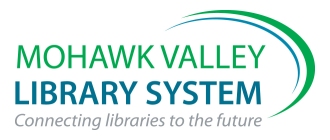 |
START WITH SCIENCE KITS
Science Programs for Children Ages 4 and 5 |
Objectives
| Students will develop an understanding of change over time. |
Books : (In kit)
- Seasons of Arnold’s Apple Tree by Gail Gibbons
- Seasons & Weather Book Set:
- Fall by Tanya Thayer
- Spring by Tanya Thayer
- Summer by Tanya Thayer
- Winter by Tanya Thayer
- A Rainy Day by Robin Nelson
- A Snowy Day by Robin Nelson
- A Sunny Day by Robin Nelson
- A Windy Day by Robin Nelson
|
Equipment : (In kit)
- Clamp lamp with aluminum reflector
- Magnetic weather and seasons board (with magnetic pieces)
- 4 Trees with bag of green apples, red apples and flowers
- Student Globe
|
Bookmarks : (In kit)
- Paper copies of the bookmark are included in the kit. PDF and JPEG copies are available here.
- PDF – 4 bookmarks per page. Ready to print in color.
- JPG – single high quality jpeg image.
|
Program
- Objectives
- Students will develop an understanding of change over time.
- Introduction
- Vocabulary
- Orbit – the path one object travels around another (earth around sun).
- Axis – imaginary straight line through earth, around which the earth spins.
- North Pole – northern most portion of the axis.
- South Pole – southern most portion of the axis.
- Equator – circle around the middle of earth that divides north from south.
- Hemisphere – the name given to any half of the globe (north, south, east, or west.
- Program
- Draw a globe (round circle) on the board (or paper).
- Label North and South poles.
- Label equator.
- Identify each of those on the actual globe.
- Discuss how the earth orbits around the sun.
- Have one student stand in the middle of a space holding a light (acting the role of the sun).
- Have another student hold the globe and walk in a circle around the sun to show the path that the Earth takes.
- Make sure to show the students how when the north is pointed away from the sun it is winter in the north and summer in the south. If the north is pointed towards the sun it is summer in the north and winter in the south. If they are equal, it is spring or fall.
- Have the student holding the Earth move to a random place around the sun and have others guess at what season it would be for a given location on the globe.
- General
- Thought Questions
- How do you think your trees look when it’s almost winter? Answers will vary; gray, leafless, bare, (dead).
- What foods will animals eat in (a given season)? Answers will vary based on season, animal, location, and what is available – berries, leaves, nuts, other animals.
- What are the colors of the forest in October? Orange, red, yellow, brown, and green.
- What are the different seasons? Spring, summer, fall (autumn), winter.
- What are some differences and/or similarities between the seasons? Answers will vary, use common sense.
- Why are there seasons? Angle of the Earth pointing towards or away from the sun, light intensity, light angle.
- What is the weather like during the different seasons? Hotter in the summer, more thunderstorms, colder in the winter, more snow, more mud/rain in spring, frost in the fall.
- When you go to bed in the summer is it light or dark outside? Light.
- When you go to bed in the winter is it light or dark outside? Dark.
|
Evaluation
Please print this evaluation, complete it and return to MVLS in the SWS red envelope.
Topics | About the Kits | Lending Policy

